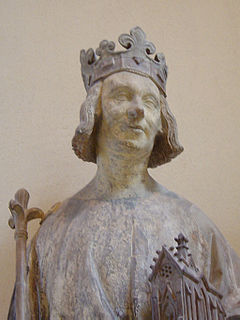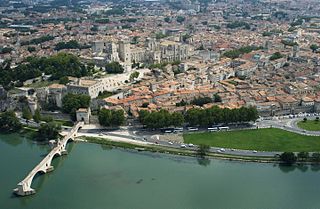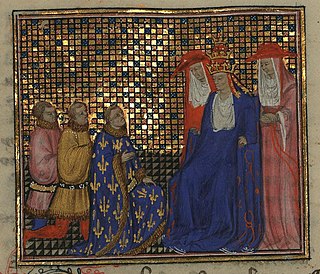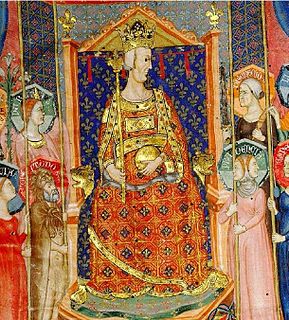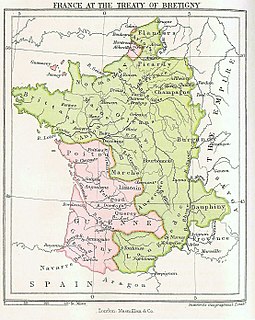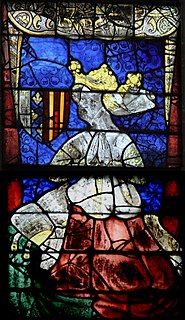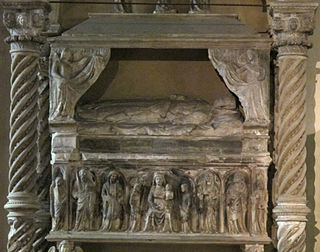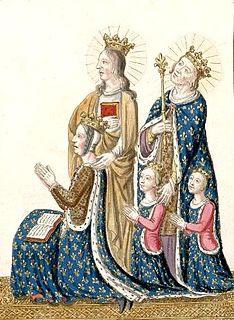| Louis I | |
|---|---|
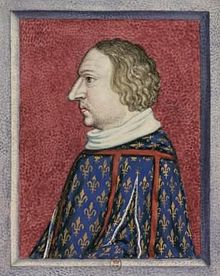 15th-century portrait of Louis | |
| Duke of Anjou | |
| Reign | 1360–1384 |
| Successor | Louis II |
| Born | 23 July 1339 Château de Vincennes |
| Died | 20 September 1384 (aged 45) Bisceglie |
| Spouse | Marie of Blois |
| Issue | Louis II of Naples Charles, Prince of Taranto |
| House | Valois-Anjou |
| Father | John II of France |
| Mother | Bonne of Bohemia |
Louis I (23 July 1339 – 20 September 1384) was the second son of John II of France and Bonne of Bohemia. [1] Born at the Château de Vincennes, Louis was the founder of the Angevin branch of the French royal house. His father appointed him Count of Anjou and Count of Maine in 1356, and then raised him to the title Duke of Anjou in 1360 and Duke of Touraine in 1370.
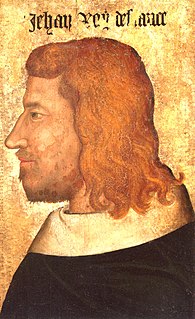
John II, called John the Good, was King of France from 1350 until his death. He was the second monarch from the House of Valois.

The Château de Vincennes is a massive 14th and 17th century French royal fortress in the town of Vincennes, to the east of Paris, now a suburb of the metropolis.
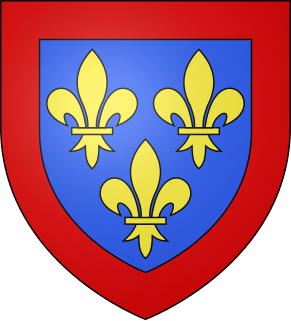
The House of Valois-Anjou was a noble French family, deriving from the royal family, the House of Valois. They were monarchs of Naples, as well as various other territories.
Contents
In 1382, as the adopted son of Joanna I of Naples, he succeeded to the counties of Provence and Forcalquier. He also inherited from her a claim to the kingdoms of Naples and Jerusalem. He was already a veteran of the Hundred Years' War against the English when he led an army into Italy to claim his Neapolitan inheritance. He died on the march and his claims and titles fell to his son and namesake, Louis II, who succeeded in ruling Naples for a time.
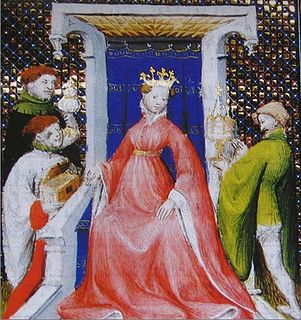
Joanna I, also known as Johanna I, was Queen of Naples, and Countess of Provence and Forcalquier from 1343 to 1382; she was also Princess of Achaea from 1373 to 1381. Joanna was the eldest daughter of Charles, Duke of Calabria and Marie of Valois to survive infancy. Her father was the son of Robert the Wise, King of Naples, but he died before his father in 1328. Three years later, King Robert appointed Joanna as his heir and ordered his vassals to swear fealty to her. To strengthen Joanna's position, he concluded an agreement with his nephew, King Charles I of Hungary, about the marriage of Charles's younger son, Andrew, and Joanna. Charles I also wanted to secure his uncle's inheritance to Andrew, but King Robert named Joanna as his sole heir on his deathbed in 1343. He also appointed a regency council to govern his realms until Joanna's 21st birthday, but the regents could not actually take control of state administration after the King's death.
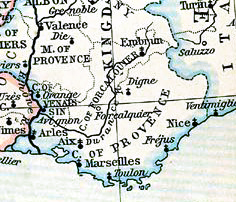
The County of Forcalquier was a large medieval county in the region of Provence in the Kingdom of Arles, then part of the Holy Roman Empire. It was named after the fortress around which it grew, Forcalquier.

The Kingdom of Naples comprised that part of the Italian Peninsula south of the Papal States between 1282 and 1816. It was created as a result of the War of the Sicilian Vespers (1282–1302), when the island of Sicily revolted and was conquered by the Crown of Aragon, becoming a separate Kingdom of Sicily. Naples continued to be officially known as the Kingdom of Sicily, the name of the formerly unified kingdom. For much of its existence, the realm was contested between French and Spanish dynasties. In 1816, it was reunified with the island kingdom of Sicily once again to form the Kingdom of the Two Sicilies.
